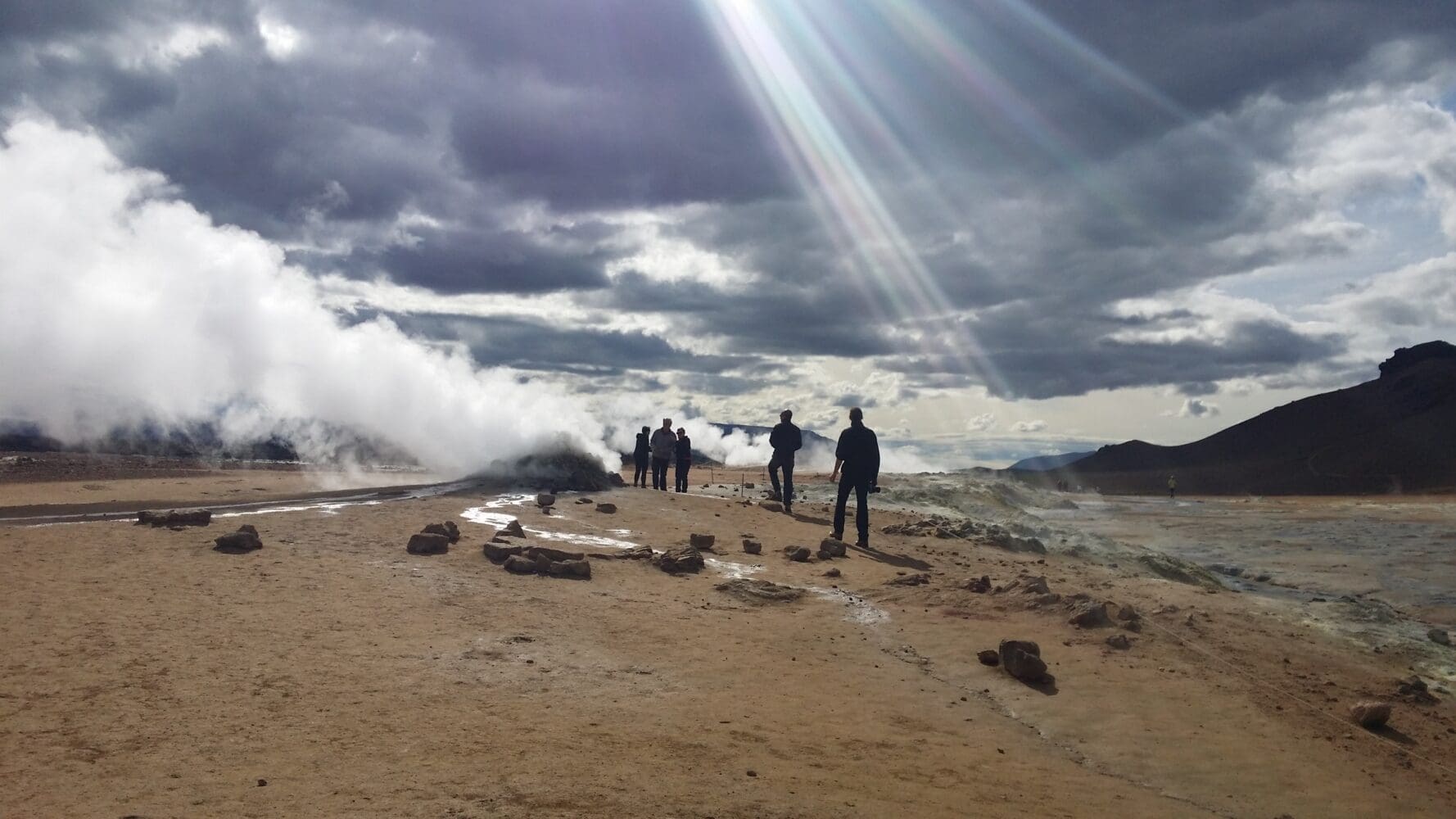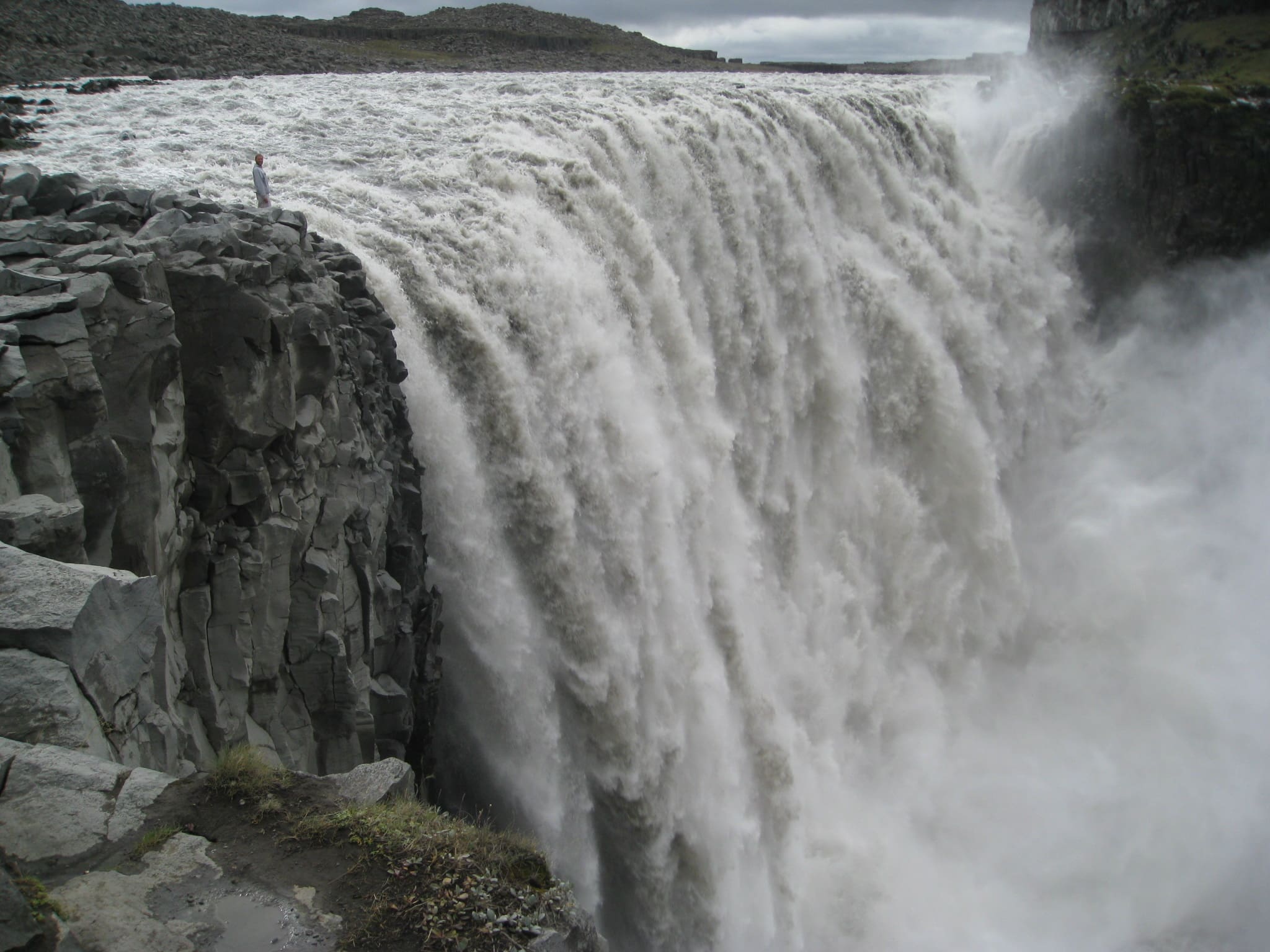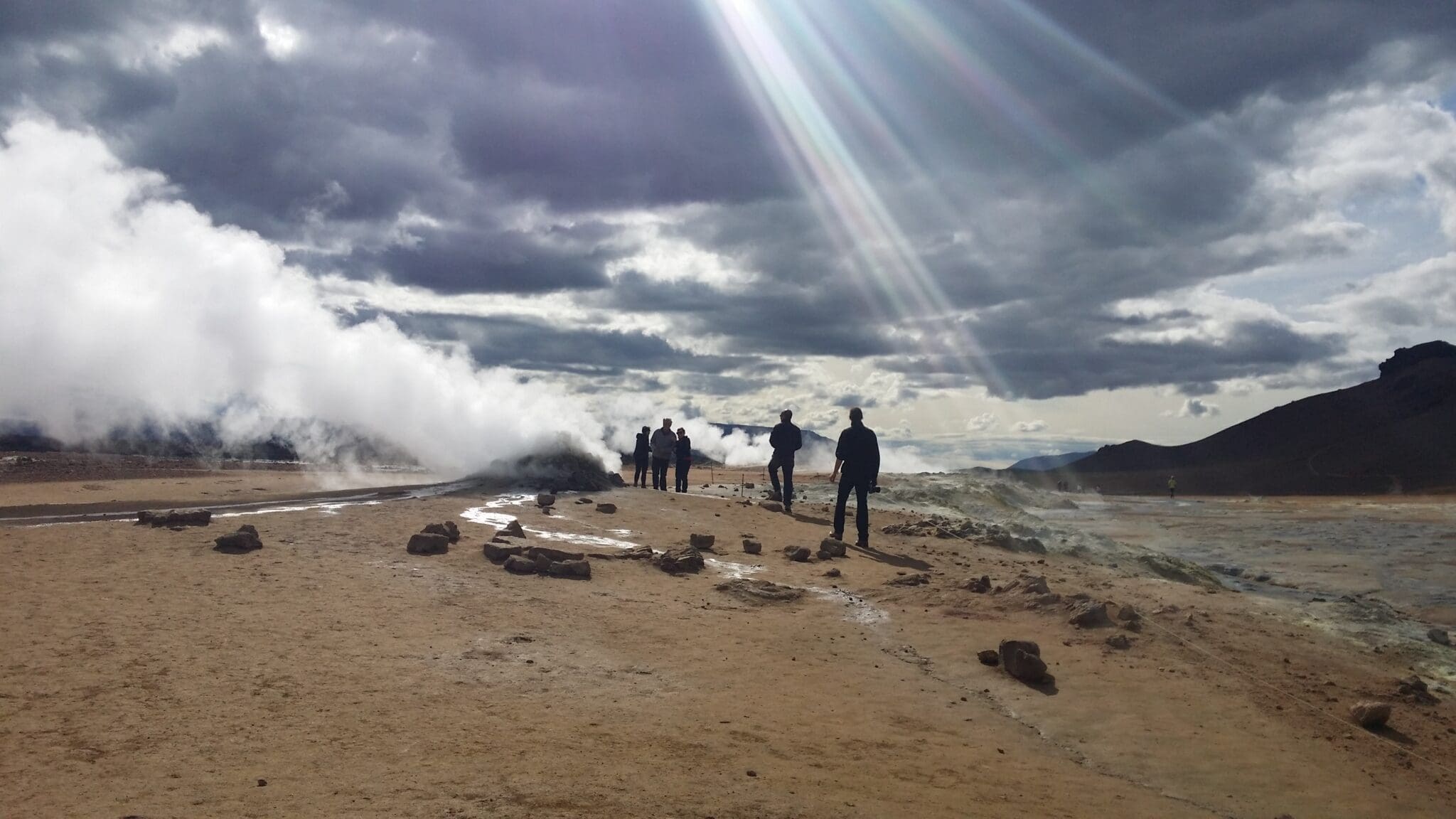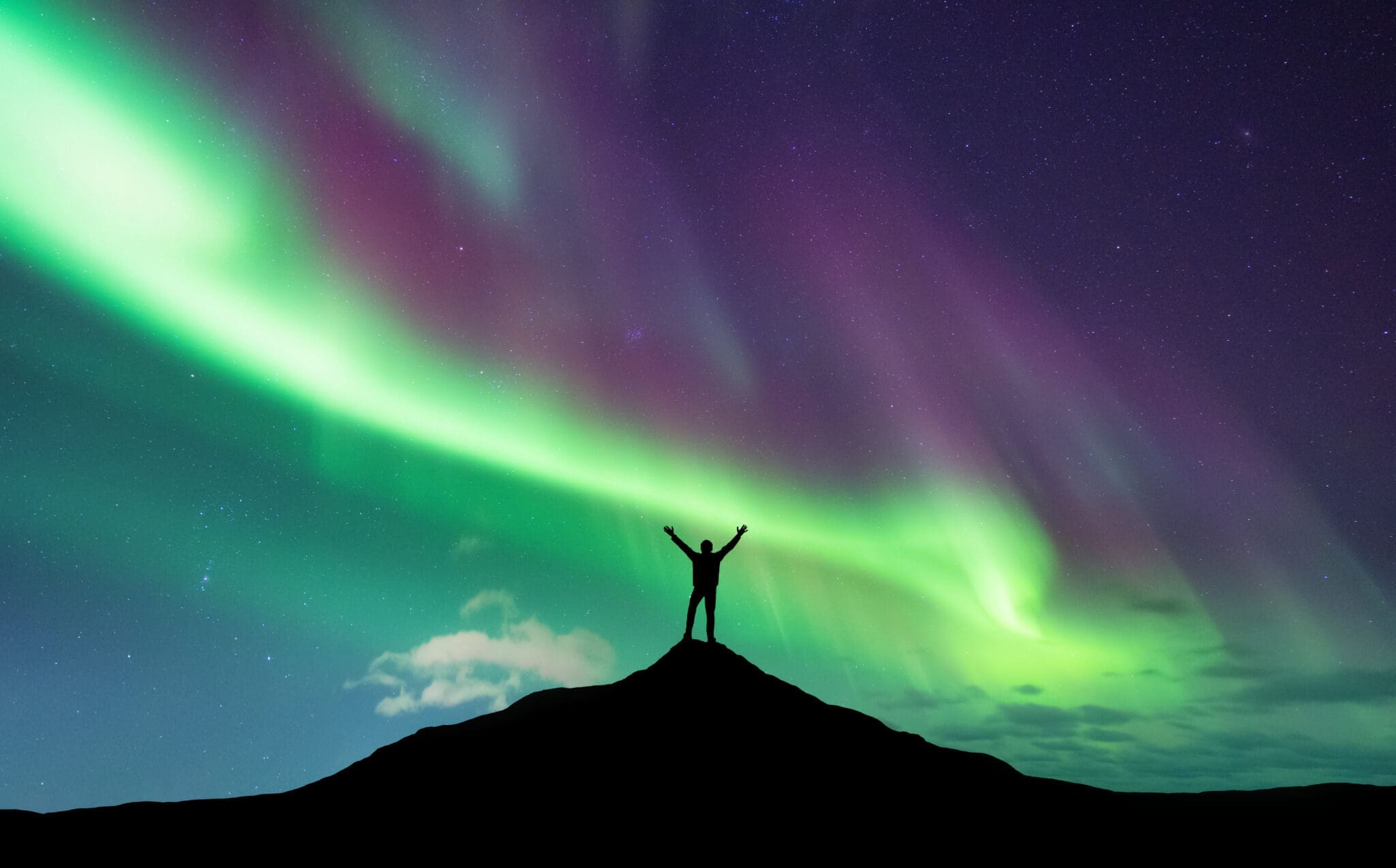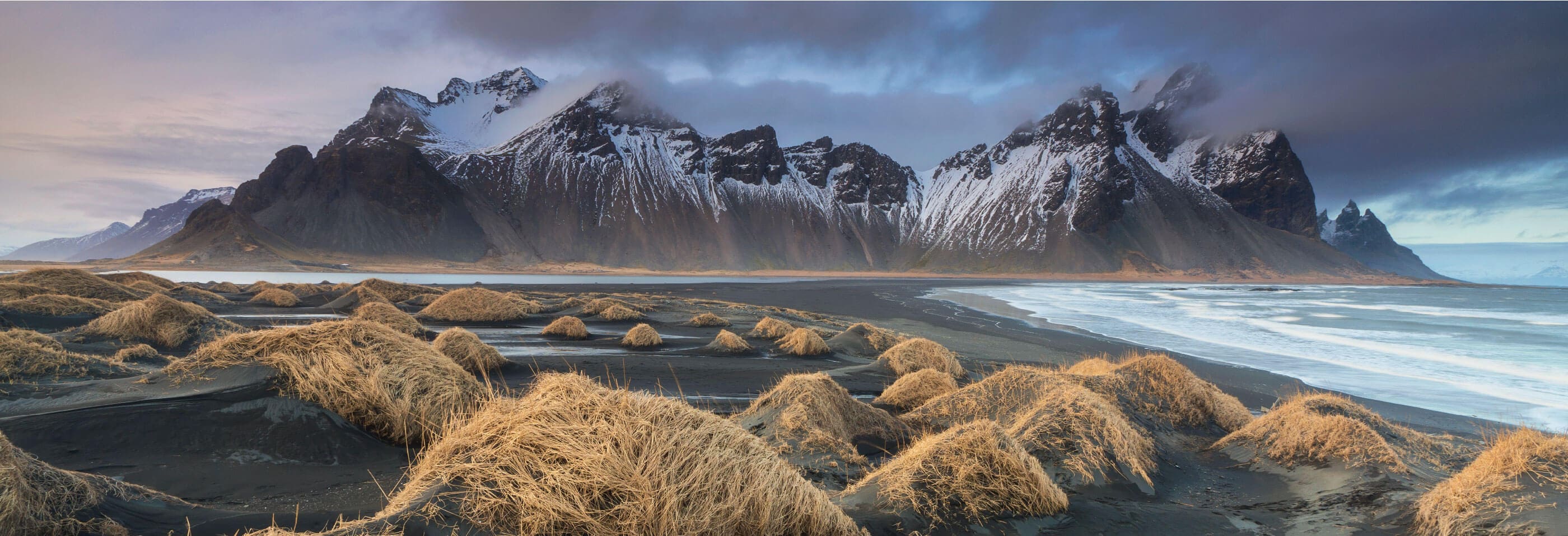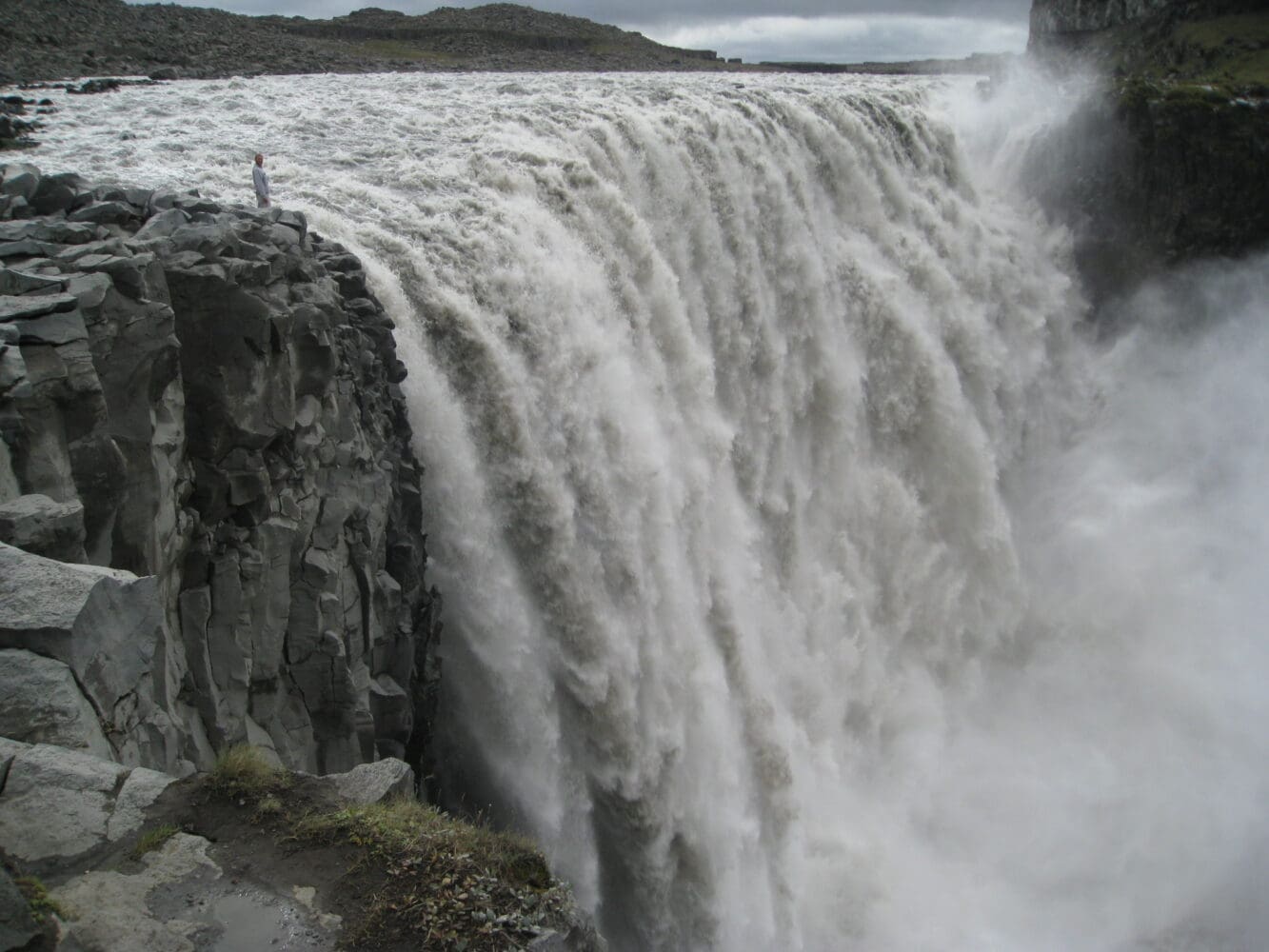
Private Diamond circle, waterfalls and amazing landscapes
Private Diamond circle, waterfalls and amazing landscapes
Visit Lake Mývatn, Waterfall Dettifoss, Ásbyrgi and Húsavík
First stop is by Waterfall Goðafoss and from there to Lake Mývatn area and stop at Hverir, boiling mud pits, by Mt. Námafjall. That area is considered by many the most beautiful and at the same time the most catastrophic place in Iceland. We will take a short stop in Víti crater near Krafla Volcano.
Next stop is by Waterfall Dettifoss 45m high and 100m wide, where a mass of water, mud and sand rumbles into Iceland’s most impressive canyon.
After Dettifoss we travel alongside the Jökulsárgljúfur glacial canyon to Vesturdalur valley and to Hljóðaklettar, the echoing cliffs. They are world known for their basalt columns that characterize the ancient crater remains.
Next we come down to the imposing horseshoe-shaped canyon Ásbyrgi, surrounded by precipitous cliffs. This place is known to be the meeting place of the pagan Gods.
We then take our time to stop at a café when we drive through Húsavík village on our way back to Akureyri.
This tour includes comfortable private transportation, a complimentary pickup service, and an English-speaking guide to enhance your experience.
- A 100% charge applies if canceled within 2 days of the start time.
- A 20% charge applies if canceled within 7 days of the start time.
- Goðafoss
Goðafoss Waterfall is one of the most beautiful waterfalls in Iceland. Nicknamed the Waterfall of the Gods due to its history. In the year 1000, Þorgeir Ljósvetningagoði made Christianity the official religion of Iceland and proceeded with throwing his statues of gods into the waterfall.
The water falls from a height of 12 meters over a width of 30 meters.
- Lake Mývatn
Beautiful lake region Mývatn is located in North of Iceland. Mývatn is Iceland’s fourth-largest lake with an area of 36.5 square kilometres.
The area around Lake Mývatn is unbelievably diverse. There you will find pseudo craters, lava formations, colourful mountains and geothermal area.
- Dettifoss
Dettifoss is powered by glacier river which flows from the largest glacier in Iceland, Vatnajökull.
Dettifoss is about 100 meters (300 feet) wide and the water falls about 45 meters (150 feet) down into the canyon.
- Selfoss
Selfoss is a waterfall in the river Jökulsá á Fjöllum in the North of Iceland. The river drops over a number of waterfalls over about 30 km before flowing into Öxarfjörður, a bay of the Arctic Sea.
- Hljóðaklettar
These extraordinary rock formations, some of them standing in the middle of Jökulsá á Fjöllum glacial river, are the remains of an ancient row of craters that have been eroded for centuries after centuries by the strong currents and floods of the river.
Rauðhólar scoria cone and Hljóðaklettar are a part of a long row of craters, which erupted approximately 9,000 years ago.
Only the volcanic plugs are now remaining, but a catastrophic flood in the glacial river 2,500-3,000 years washed the volcanic material away.
- Ásbyrgi
Ásbyrgi is a glacial canyon and forest in the North of Iceland, located approximately 38 km east of Húsavík on the Diamond Circle road. The horseshoe-shaped depression is part of the Vatnajökull National Park and measures approximately 3.5 km in length and over 1 km wide.
- Húsavík
Húsavík is a town in Norðurþing municipality on the north coast of Iceland, on the shores of Skjálfandi bay, with 2,307 inhabitants. The most famous landmark of the town is the wooden church, Húsavíkurkirkja, built in 1907.
Warm clothes, Good hiking shoes, Water bottle, Lunch pack
Meeting point: Hof culture house, Strandgata 12
- Difficulty:
- Moderate
- Duration:
- 10 hours

